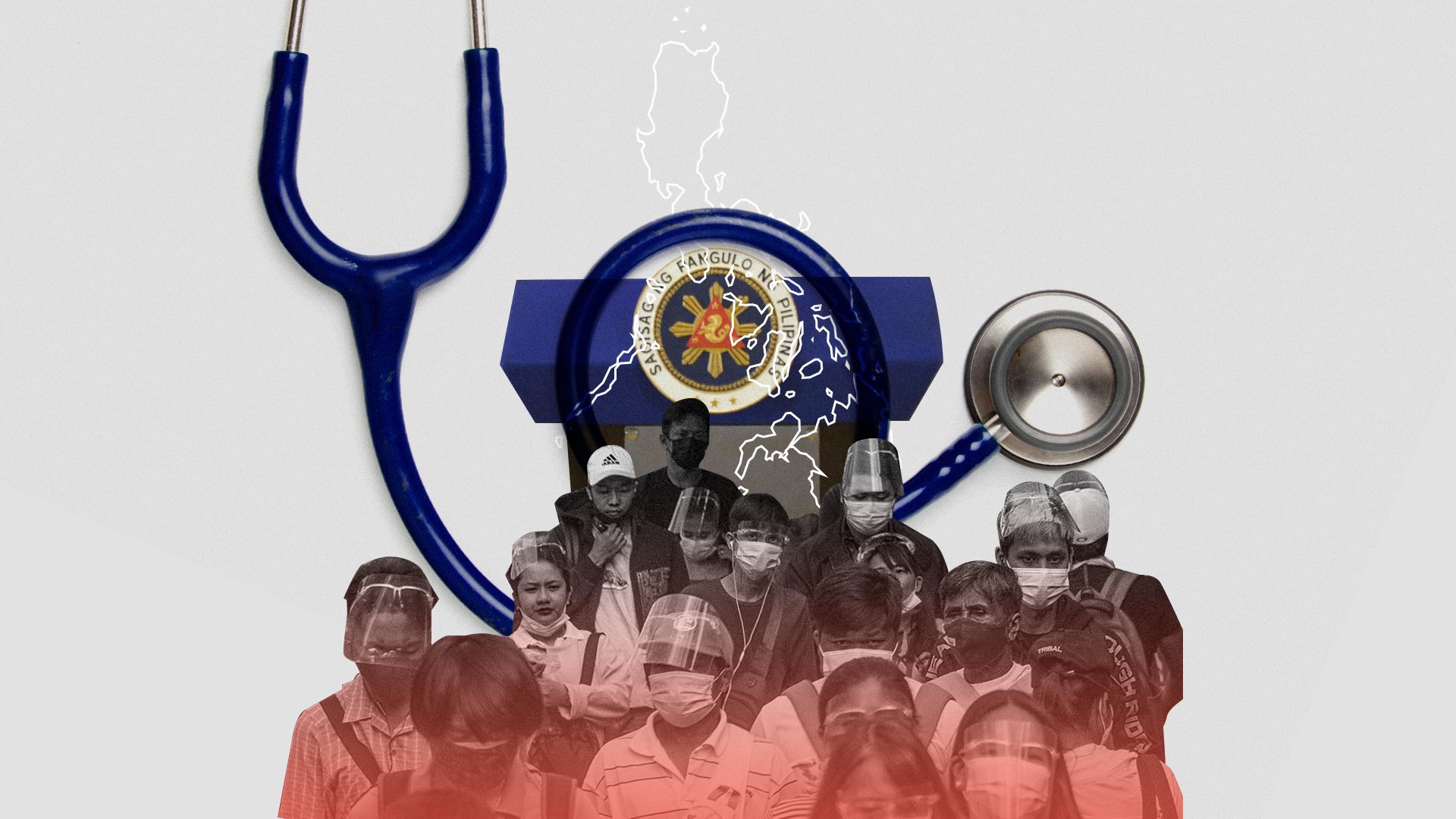WHAT YOU NEED TO KNOW
How many people have tested positive for COVID-19 in the Philippines? How many have recovered, and how many have died? What is President Rodrigo Duterte doing about it?
Metro Manila and other parts of the country have eased into the “new normal,” owing to lower cases. Will this be sustained? How is the Department of Health addressing the evolving situation? What should the public expect in terms of the economy? What are the latest updates from the World Health Organization?
Bookmark and refresh this page for the latest news updates, opinion articles, and analysis pieces about the COVID-19 pandemic in the Philippines.
LATEST UPDATES
DOH considers putting up vaccination sites at polling precincts
The Department of Health (DOH) said on Saturday, April 30, that it would consider putting up vaccination sites at polling precincts on election day.
Health Undersecretary Myrna Cabotaje was responding to a question on a Laging Handa briefing if the DOH had considered it already, and she said that it had not been studied so far. “But let’s see. Because everybody will be voting in their areas, so… We will study if we can set up vaccination sites at precincts,” she said in a mix of English and Filipino.
In the Philippines, there remains a significant gap between the number of people who have gotten vaccinated at around 60%, and the portion of the population that has expressed willingness to get a shot at around 87%. A
ccording to government data, most effort is needed among the unvaccinated elderly population, the Bangsamoro Autonomous Region in Muslim Mindanao (BARMM), and unboosted seniors and vulnerable groups, among others.
Cabotaje on Saturday said that special vaccination days in BARMM are all-systems-go after Ramadan ends at the beginning of May.
DOH: No need for polling officers to get 2nd booster shot if not immunocompromised
The Department of Health on Saturday, April 30, thumbed down the need for second booster shots against COVID-19 for officers working at polling precincts on election day, May 9.
“For the officers in polling precincts, what’s important is that they have a complete primary dose and the first booster. We think that will be sufficient [as long as] they are not immunocompromised,” Health Undersecretary Myrna Cabotaje said in a mix of English and Filipino in a Laging Handa briefing.
Meanwhile, Cabotaje said that they would push for allowing second boosters for overseas Filipino workers (OFWs) who need these as requirements for their employment.
“For our OFWs, some countries are requiring second boosters and some of their vaccine [brands] are not recognized. We’ll appeal to the Health Technology Assessment and justify why the OFWs may be given their second boosters,” Cabotaje said.
The Philippines began administering second booster shots against COVID-19 on April 25 for immunocompromised individuals aged 18 and above.
LIST: Metro Manila, other areas to remain under Alert Level 1 until May 15
See the alert level status for COVID-19 of your area for May 1 to May 15, 2022, here.
Philippines begins rollout of COVID-19 2nd booster shot on April 25
The rollout on Monday, April 25, will begin with immunocompromised individuals aged 18 and above.
Read more.
DOH: COVID-19 case surge possible if Holy Week, campaign crowds ignore health protocols
The Department of Health (DOH) said that a rise in COVID-19 cases is not far-fetched if the public does not comply with minimum health protocols during the Holy Week break and in campaign rallies, especially in areas with a low vaccination rate.
Read more.
How the next president should address health inequities in the Philippines

With COVID-19 still prevalent in the Philippines, there is a need for a leader capable of safeguarding the health and lives of the people. The next president will inherit a country with a health system in ruins and also one that is beset by unaddressed health inequities. Though the COVID-19 pandemic has affected everyone in the country, it has affected some more than others. A transformative president is necessary to change the circumstances “in which people are born, grow, live, work, and age.”
The main factors affecting Filipinos’ risk for developing diseases are diet, physical inactivity, pollution, and abuse of tobacco and alcohol. These diseases consequently increase one’s chances of death in the Philippines, regardless of age. But if we look at the “causes of causes,” there is also a socio-economic gradient in our exposure to these risks.
Reducing the exposure of all communities, rich and poor, to these risk factors will improve their health status, reduce the financial risks due to ill health, and provide them with “lives that they have reason to value.” We propose an agenda for correcting the health inequities in Philippine society.
Doctors from EpiMetrics, a public health research institution, urge the voters to pick a president who can not only manage the health system effectively but who can also ensure that health is for all and is not only for the few. Read their full recommendation here.




